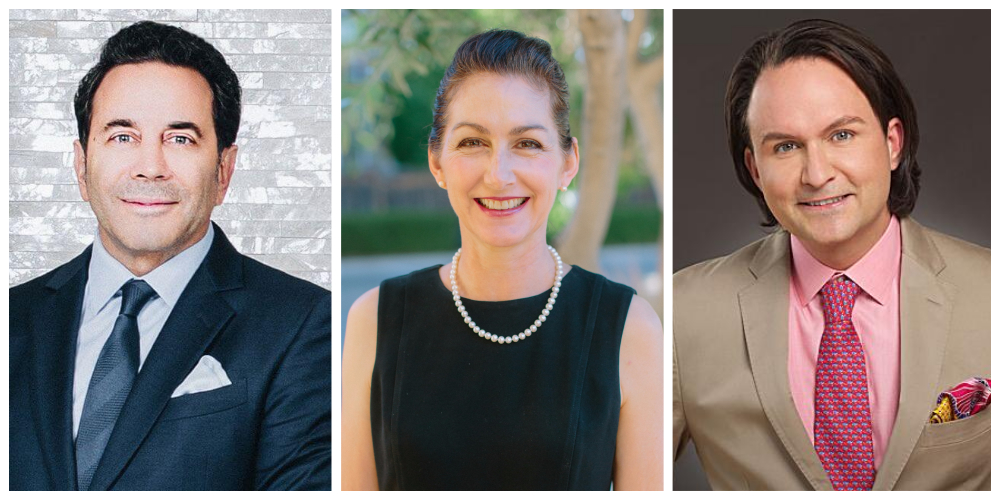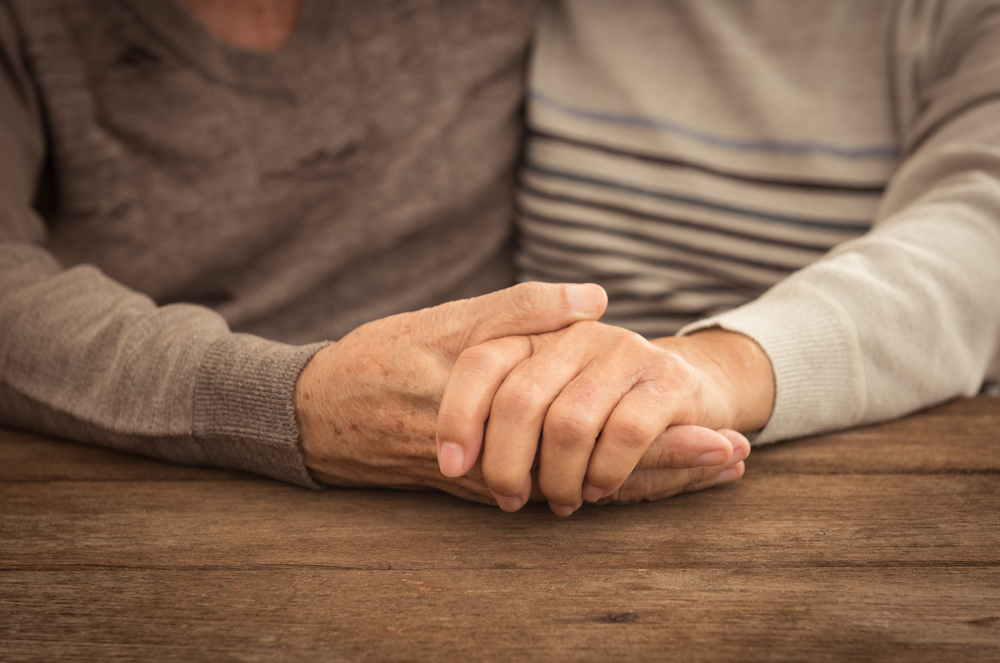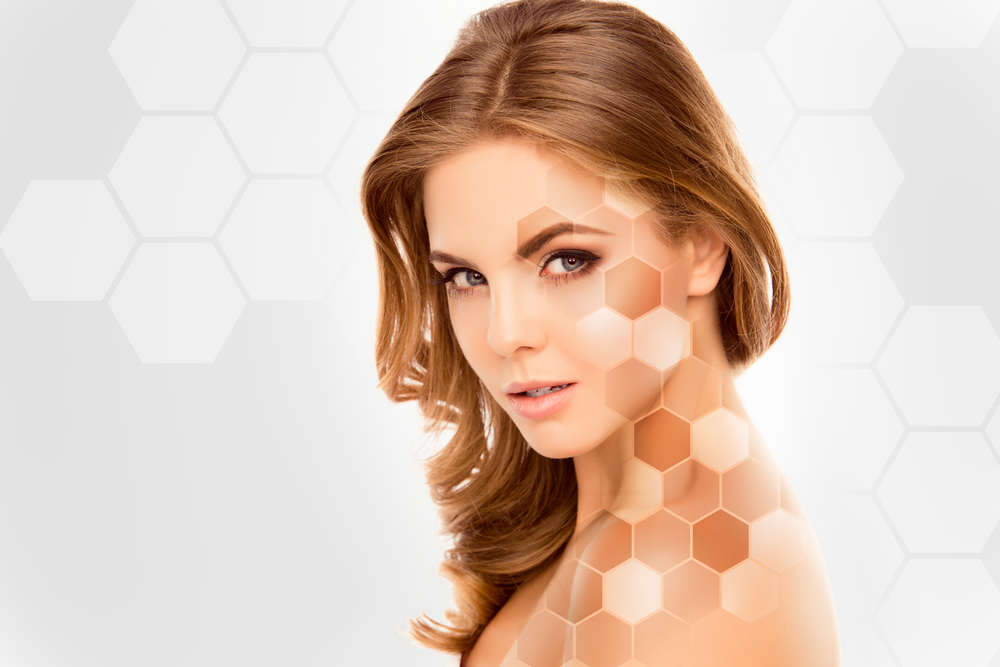Which anti-aging products and procedures are recommended when you’re still in your 20s or 30s? We discussed this with three expert physicians.
Anyone over the age of 45 can confirm that preserving your skin’s youthfulness is an uphill battle. In fact, it has been proven that as early as age 25, the presence of the skin’s two structural proteins — collagen, which keeps the skin firm, and elastin, which gives it its flexibility — begins to decrease. As our skin becomes thinner and drier over time, even those of us with the best genetic heritage will still experience visible facial lines and a loss of fullness.
While maintaining a healthy lifestyle is the most proactive way of preserving the skin, anti-aging products and procedures are also used by men and women of all ages.
The question is, which skincare options are recommended when you’re still in your 20s or 30s? We discussed this with three expert physicians: Dr. Paul Nassif of Nassif MD Plastic Surgery in Beverly Hills, Dr. Heather Furnas of Plastic Surgery Associates in Santa-Rosa, and Dr. Marc Dupéré of Visage Clinic in Toronto, Canada.

Does it help to begin anti-aging procedures rather than wait until wrinkles have already appeared? If so, what should be prioritized?
MD: Maintenance is always easier and simpler than correction. Sun-damaged skin is not easily corrected and cumulates over time — this is true for both aging and skin cancer — requiring more invasive or aggressive treatments such as Botox injections, fillers, laser resurfacing, and facelifts.
PN: Starting in your twenties — incorporating facials and lighter medical skin treatments like peels and microdermabrasion, as well as quality –skincare products– will help your anti-aging cause.
HF: The worse the sun exposure, the deeper the lines and the thinner the dermis, the harder it is to reverse damage. While we can’t fight genetics, we can protect our skin from UV rays and not smoke!
Does the repeated use of anti-aging skin products yield the same results, or will you get diminishing returns?
MD: Some patients can build up a tolerance to the medications. I explain to my patients that skin can be likened to a muscle: if you keep working up your biceps the same way, with the same 10 lbs every day, at some point the muscle will stop growing and become tolerant to the exercise.
Most of our skincare packages last on average three months before completion, so once or twice a year I switch my patient to a different system.
PN: Does taking vitamins, eating healthy, or working out ever stop being good for us? Again common sense dictates. The best remedy is a consistent skincare routine using the right products. For instance, our Nassif MD Bio-Rhythmic Skincare line feeds the skin essential actives for differing day and nighttime needs.
HF: A small number of women may develop resistance to Botox with repeated use.
Can neuromuscular modulators like Botox, Xeomin, and Dysport be used successfully by patients in their twenties?
PN: Botox or Dysport may be used as a preventative treatment for patients in their late twenties if there are hints of lines or visible wrinkles. For example, if an individual frequently frowns, Botox or Dysport can decrease the frowning and prevent lines from appearing in the future.
I would never perform injections if I feel the patient does not need them, but the late twenties may be a good time to start for the right candidate.
HF: Facial lines develop from the action of our facial muscles, but there is a wide variability in how active certain muscles are and how they exert tension on the overlying skin.
Some people in their 20s develop frown lines and forehead wrinkles that are etched into the skin even at rest. For this subset of people, a neuromodulator such as Botox can relax the line and prevent it from etching deeper. For others those lines may not appear until the 30s.
What about dermal fillers in your 20s?
HF: For anti-aging purposes, the nasolabial folds are usually the first area to be injected for some women in the 30s. Lip lines appear later, usually in the late 30s or 40s, but younger women may want filler to plump their lips.
MD: Dermal fillers and Botox are like a “happy” couple: I use them together in most of our patients. Dermal fillers are a sugar-type of molecule called hyaluronic acid, which is found throughout the body. It’s used to fill lines and scars, and augment regions such as the cheeks, chin, lips and jaw angles, or to replenish age-related volume loss in the temples, the earlobes, over the orbital bones, along the jawline, and over the hands. Fillers are powerful volumizers.
PN: They are generally most useful for people in their mid to late thirties, but can be used as early as the twenties depending on the needs of the patient.
Specifically, Juvederm is a great filler for the lips. It’s very soft, and yields a great looking yet natural result. Restylane is a fantastic tear trough filler which is also great for the marionette lines. Perlane is used for the nasolabial folds and marionette lines. Belotero is a great filler for the tear trough, and I like to use Radiesse for the nasolabial folds.
How do chemical peels work? Can they be used successfully by patients in their twenties?
PN: There many different types of chemical peels that can be beneficial for a variety of ages. A chemical peel is an exfoliating treatment that improves the appearance of the skin. The treatment can be used for the face, neck or hands. Sunscreen is important following the peel, as the regenerated skin will be more photosensitive.
HF: Alpha hydroxy acid peels like glycolic acid take off the top layer of dead cells, which can improve the appearance of fine lines. These peels are at the epidermal layer and can be done over time.
A TCA (Trichoroacetic acid) peel gets into the dermis and can potentially thin the dermis if done repeatedly. A TCA peel should therefore only be done when warranted, such as in cases of sun damage, fine lines, and hyperpigmentation. Usually this isn’t until the thirties.
What about laser procedures?
MD: When used by qualified and certified technicians and doctors, lasers and IPL are antiaging treatment cornerstones for patients of all ages. They’re used for treating small facial blood vessels, brown “age” spots and fine wrinkles, but can also be beneficial for seriously sun-damaged skin and acne scars with full Sciton Erbium and CO2 resurfacing.
PN: In general, lasers are a fantastic way to reverse the aging process. Fractional CO2 laser resurfacing usually requires only one treatment. It’s safe on almost all skin types, and powerfully reverses 5-10 years of skin aging, wrinkles and sun spots.
The procedure can be used in sensitive areas such as lines around the lips, eyes and eyelids, or for the entire face. There are also other laser treatments available for wrinkles, such as the V-Beam pulsed dye laser. These treatments are not typically beneficial during the twenties: they’re more effective once the more visible signs of aging have set in.
HF: Lasers vary in their aggressiveness, and can thin the dermis when used repeatedly. For example, Clear and Brilliant is a gentler laser that’s great for the younger woman looking to improve tone and texture. More aggressive laser resurfacing is used on deeper wrinkles, hyperpigmentation, and for tightening the skin, usually on patients in their 30s, 40s and later.
What’s Retin-A? Can it be used successfully by patients in their twenties?
MD: Retinoids are powerful topical molecules that will speed up the cell turnover and replace the thick outer dead cell layers with new and healthier one, providing the skin with vitality and a healthy, beautiful pinkish glow.
PN: Retin-A can be used for a variety of issues such as acne, anti-aging and photo-damage. It can stimulate collagen growth, which ultimately will reduce the appearance of fine lines and wrinkles. Used preventatively, it’s generally a great treatment to add to your skincare regimen.
The treatment comes with its downsides however, as the skin can peel and become irritated, so it’s best to start conservatively.
HF: Retin-A is effective both in treating acne as well as in improving lines, so young women sometimes begin using it around the age of 25. It increases cell turnover and thickens the dermis, making it an exceptional scientifically-proven product.
The bottom line is that there is no age or stage during which anti-aging skin products and cosmetic procedures cannot help patients attain or maintain their skin’s youthful vitality. That being said, Dr. Paul Nassif offers these parting words: “Can a 70-year-old smoker and sun-bather expect to look 40 by beginning to care for her skin? Of course not, but improvements can be seen in most cases I am an optimist, so I would say it’s never too late, but again, expectations need to be tempered with the reality of the situation. Prevention is better than correction.”
Preventative Skin Care in Your 20s: 6 Basic Tips
There are many things you can do in your 20s to prevent your skin from aging, from lifestyle choices to the use of quality skincare products to investing in skin care treatments offered by your dermatologist.
Here are some tips:
- Avoid Smoking
Smoking is probably the single worst thing you can do for your skin (not to mention your body). It leads to premature wrinkling and other signs of aging. Avoid smoking at all costs!
- Avoid the Sun
Tanning is flat-out unhealthy; not only can it lead to skin cancer, but it ages the skin. Need any additional reasons to stay out of the sun whenever possible?
- Wear Sunscreen
Wearing sunscreen (SPF 30 or higher) on a daily basis is a great way to prevent aging and the the development of skin cancer.
- Drink Water — Lots of It
Drinking eight eight-ounce glasses of water per day will help keep your skin healthy and youthful-looking for years to come. This isn’t just an old wives’ tale — it’s been proven.
- Visit Your Dermatologist
If you’re fair skinned, you should be doing this once a year anyway, to make sure you don’t have any dangerous moles, precancerous lesions, etc. But it’s still a good idea to visit a dermatologist if you have darker skin because all skin types are susceptible to skin damage.
A dermatologist can also provide you with advice tailored to your skin, such as which skincare products to use.
- Consider Preventive Treatments
Beginning in your 20s it’s a good idea to invest in preventive facials. It may also be a good idea to invest in facial peels and lighter medical skin treatments to stave off physical manifestations of aging.
Some in-office skin care treatments — and certainly surgical anti-aging procedures — are premature or overkill for most people in their 20s. But other preventive treatments are a great way to complement the actions we’ve already covered above.
Depending on your skin needs, these may include microdermabrasion, neuromuscular modulators like Botox, Xeomin, and Dysport (if there are the beginning signs of lines or visible wrinkles), laser treatments and others.
Speak with your dermatologist to learn more.
Updated, June 2017 – Zwivel Team









